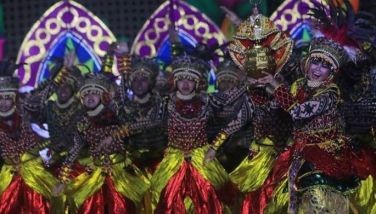San Fran Camotes Youth: Climate Action Proposals
This week, five mini workshops will be conducted in different barangay clusters throughout San Francisco, Camotes to encourage the youth (15-24 years old) to share their climate action ideas/proposals.
Their proposals may benefit from a review of available data about San Fran, its population/resources/situationer/challenges of barangays/puroks) and the 2024-2026 Local Climate Change Action Plan (LCCAP) to provide comprehensive background/context for their climate action proposals.
Which of the 15 barangays (coastal/upland) have urgent, priority climate change and other socio-economic challenges?
Are food/water/other resources, health/educational facilities and main sources of livelihood sufficient and sustainable for the 59,236 residents (as of 2020 Census) throughout the 106.93 square kilometer-land area of the municipality?
The seven strategic priorities included in theSan Francisco LCCAP for 2024-2026 are:
1) Blue-Green Community-Based Tourism which aims to protect/preserve the municipality’s terrestrial/aquatic resources for sustainable tourism and community development.
2) Ecological & Environmental Sustainability Program (Malahutayong Kinaiyahan Kaugmaon sa Tanan - Sustainable Environment for Life and Development) that proposes to do an inventory & assessment of biotic and abiotic components of the San Francisco environment, protect/conserve terrestrial and aquatic resources of the municipality, delineate land/water use, and pass/implement relevant ordinances to protect/conserve/maintain/ improve and rehabilitate the natural environment.
3) Food security Program (Kalambuan sa Agrikultura Unahon Nato (K.A.U.N) sa San Fran) to ensure adequate/sustainable food supply from locally-produced farm and aquatic products.
4) Human/Health Security/DRR Program (Himsog nga katawhan sa luwas nga katilingban- Healthy people in a resilient community) aimed at maintaining healthy/resilient population, building community resilience to climate risks, and, producing pro-active individuals inmanaging health/climaterisks.
5) Water Sufficiency Program (Tubig for Life) to ensure sufficient supply of good quality water forhuman consumption & purposes, to maintain/preserve aquatic resources andecosystem, and, to conserve/maximize the utilization of rain andgroundwater.
6) Knowledge and Capacity-building Program (Continuous grassroots education towards CCA-DRRM resilience) to educate San Franciscohanons on CCA-DRRM, to become a learning hub of information on CCA-DRRM, to transform social interaction and learning to provide socio-economic benefits.
7) Renewable energy and public infrastructures Program (San Francisco Camotes Organic Renewable Energy& ResilientInfrastructures (SCORER)aimed at having all puroks energized, exploring and utilizing possible sources of alternative energy, and building/constructing infrastructures that are climate proof.
Last June 3, it was heartening to observe that most of the issues needing climate action mentioned by the San Fran youth participants were included in the San Fran LCCAP.
Strategic Priority Program(SPP) #2 had several proposals like a) watershed strengthening through inclusive/participatory tree planting/monitoring, b) mangrove rehabilitation/restoration with prior identification/prioritization of what/when/where to plant (preferably in most needy areas as project sites), c) bamboo planting/growing/nurturing with out-of-school-youth as lead stewards for livelihood, starting with planting 200 bamboo trees in land-rich areas, and, d) reforestation through tree planting/conservation to arrest forest degradation/reduce forest deforestation rate.
SPP#3 proposals included a) organic farming, b) sustainable supply of organic fertilizer, and, c) provision of adequate irrigation for farms.
For SPP #4 proposals- centered on waste management for better health of people and the environment- included a) promoting sustainable waste management through waste segregation, b) have trash bins made from used bottles, c) promote eco-bricking/construct Material Recovery Facilities and other structures from ecobricks, starting from identification of plastic-prone areas, mobilizing youth to gather/collect ecobricks and installation/completion of ecobrick structures , and, d) campaign to encourage3Rs and composting in households (with use of microorganisms).
Proposals for SPP #5 included a) assessment of water situation per area, b) water catchment, c) water (poso) rehabilitation to address water shortage, d) tapping experts to identify spring sources, e) water remediation of Awihaw water source, f) sustainable/ accessible clean water supply, and, g) having rainwater harvesting facilities.
There was a proposal for #6 through information and education and for #7 focused on installation of street solar lighting.
- Latest



















